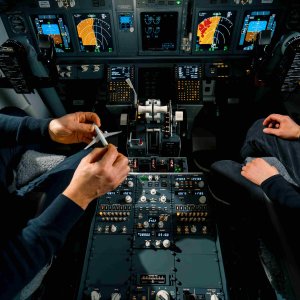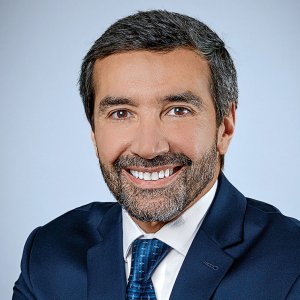Policies Necessary for Aviation’s Recovery: IATA

STORY INLINE POST
Q: As travel restrictions ease, how are you working with your members to keep COVID-19 contagion levels to a minimum and help the industry recover?
A: Since the onset of the pandemic we have been working closely with different organizations around the world, such as the International Civil Aviation Organization (ICAO) and the World Health Organization, resulting in the implementation of a multilayered approach to minimize the contagion risk for passengers. Even before the pandemic aircraft were equipped with HEPA filters which capture 99.9 percent of all air particles and air on planes flows from top to bottom and is filtered before being reused.
We have also been working with Airport Council International to design and implement measures to reduce risks, such as mask use, additional cleaning and temperature screenings of passengers. This multilayered approach has kept passengers safe and travel numbers are starting to rise again, which is good for everybody.
Q: How can these measures be implemented without becoming a burden or nuisance for passengers?
A: Passengers are mostly glad to see that governments and airlines are taking the necessary steps to keep them safe. Additional measures do require more paperwork according to each country’s policies. At the beginning of the pandemic, all states agreed to certain safety measures but then implemented them differently, creating a global patchwork that is hard to navigate. Since then, our efforts have been aimed at simplifying policies so that passengers can understand them, and governments can ensure the measures are being fully implemented.
Q: What benefits does IATA derive from having offices in Mexico?
A: One of the reasons we are in Mexico is that we need to deal with different stakeholders in the country. We need to work with different governmental authorities, including the local civil aviation authority. Having local knowledge is valuable as it allows us to navigate the environment, understand requirements, provide feedback, and prod the government to respond.
Q: How is IATA collaborating with the Mexican government to help the country’s airspace recover the Federal Aviation Administration’s (FAA) Category I designation?
A: We are supporting the authorities and airlines by providing insight to regain this category. It is a long-term effort, so we will have to wait for the FAA to evaluate if the issues it pointed out were corrected, so the country can regain FAA Category I designation.
Q: What sustainability measures is the aviation industry implementing?
A: At present aviation emits CO2 by burning fossil fuels, as there are only very limited alternatives. However, aviation was one of the first industries to propose an aligned global concept to reduce emissions through the United Nations, ICAO’s Carbon Offsetting and Reduction Scheme for International Aviation (CORSIA).
We also work with stakeholders to seek ways to reduce emissions by improving aircraft efficiency and developing new biofuel technology. Sustainable aviation fuels (SAF) and hydrogen will play a key role to offset CO2 emissions. We just need governments to support these initiatives through incentives in order to achieve the most cost-competitive pricing structure for SAF. Different regions are moving at different speeds. The EU has historically led sustainability efforts, but numerous Latin and North American carriers are also making environmental commitments by sourcing SAFs or renewing their fleets with more fuel-efficient aircraft.
SAFs are already perceived as an alternative but volumes are still low. We need to create incentives to promote increased SAF production to meet the needs of the market. Some regions will produce different types of SAF, but it is a matter of understanding opportunities for every country, including Mexico.
Q: Where does Mexico’s aviation industry stand in terms of sustainability?
A: The Mexican government must start enacting policies that will generate the right incentives to push the market to meet sustainability challenges. Mexico is just starting to implement certain policies but there are good international guidelines that the country should take into consideration while developing its own.
Q: Amid a still uncertain environment, what is the best strategic move that airports and airlines can make today?
A: The industry should approach these challenges jointly and remain flexible. Conditions change every day, especially with the discovery of new COVID-19 variants. We are no longer in the situation we were in 2020 or in early 2021, when there was significant unpredictability. Some countries are starting to remove measures, such as masks or the need for pre-testing for vaccinated passengers. But the world is moving at different speeds.
Q: How have the needs of passengers changed and what changes should be made to generate more confidence to travel?
A: Leisure travel is recovering but business travel will take longer. Passengers expect the same efficiency and safety regardless of whether they are flying for business or leisure.
We forecast that domestic markets will recover by 2023 and international markets by 2024. We are trying to accelerate measures for contactless travel, but COVID-19 has set us back in this endeavor, as nearly all governments began asking for proof of testing or vaccination in paper format. Governments need to accept electronic proof that the airlines could integrate into their systems. We need to be able to provide electronic options for all these processes and, to do so, we need a standard and for governments to adopt it. Immigration and customs should be digital processes; the technology is already available for this. Many governments tend to take a more conservative approach in this matter and do not trust the electronic world. It is however part of our advocacy work to convince them of the advantages of digitization. We launched the IATA Travel Pass, which will eventually allow passengers to digitally store passports, visas, vaccination statuses and other travel-related documentation on their mobile device and decide if they would like to share it with relevant stakeholders in the travel value chain.
Q: How is IATA working with governments and other international authorities to standardize health and safety practices regarding COVID-19?
A: We provide governments with suggestions of measures that have proven to be more efficient. One of the challenges in doing so is that governments in general do not understand the intricacies of every business. Our job is to get them to better comprehend how to put measures in place. We demonstrate what has been done in other countries and reassure governments that those measures facilitate safety without restricting travel.
Q: What are your expectations for passenger traffic in Mexico and globally and what impact could this have on the recovery of economies across the world?
A: In Mexico, we have seen a good recovery of the domestic market. Mexico has surpassed its 2019 domestic numbers. Internationally, Mexico benefited from the fact that the country never closed its borders so it became a destination of choice for many, especially for those from the US. But it will take some time for aviation to return to its 2019’s international traffic. Globally, we expect the sector to recover in 2024. Mexico might get there sooner, but we also must consider emerging developments, such as new variants.
The aviation industry has proven to have a clear, positive impact on global economies. It generates jobs, opportunities and trade. Globally, for every 10 jobs, one is related to aviation, tourism and their extended value chain. This is especially the case in Mexico, which has an economy largely dependent on tourism.
The International Air Transport Association (IATA) represents 290 airlines and 83 percent of total air traffic across the world. It supports many areas of aviation and helps to formulate industry policy on critical issues concerning the industry.








 By Sofía Hanna | Journalist and Industry Analyst -
Mon, 03/28/2022 - 09:30
By Sofía Hanna | Journalist and Industry Analyst -
Mon, 03/28/2022 - 09:30
















